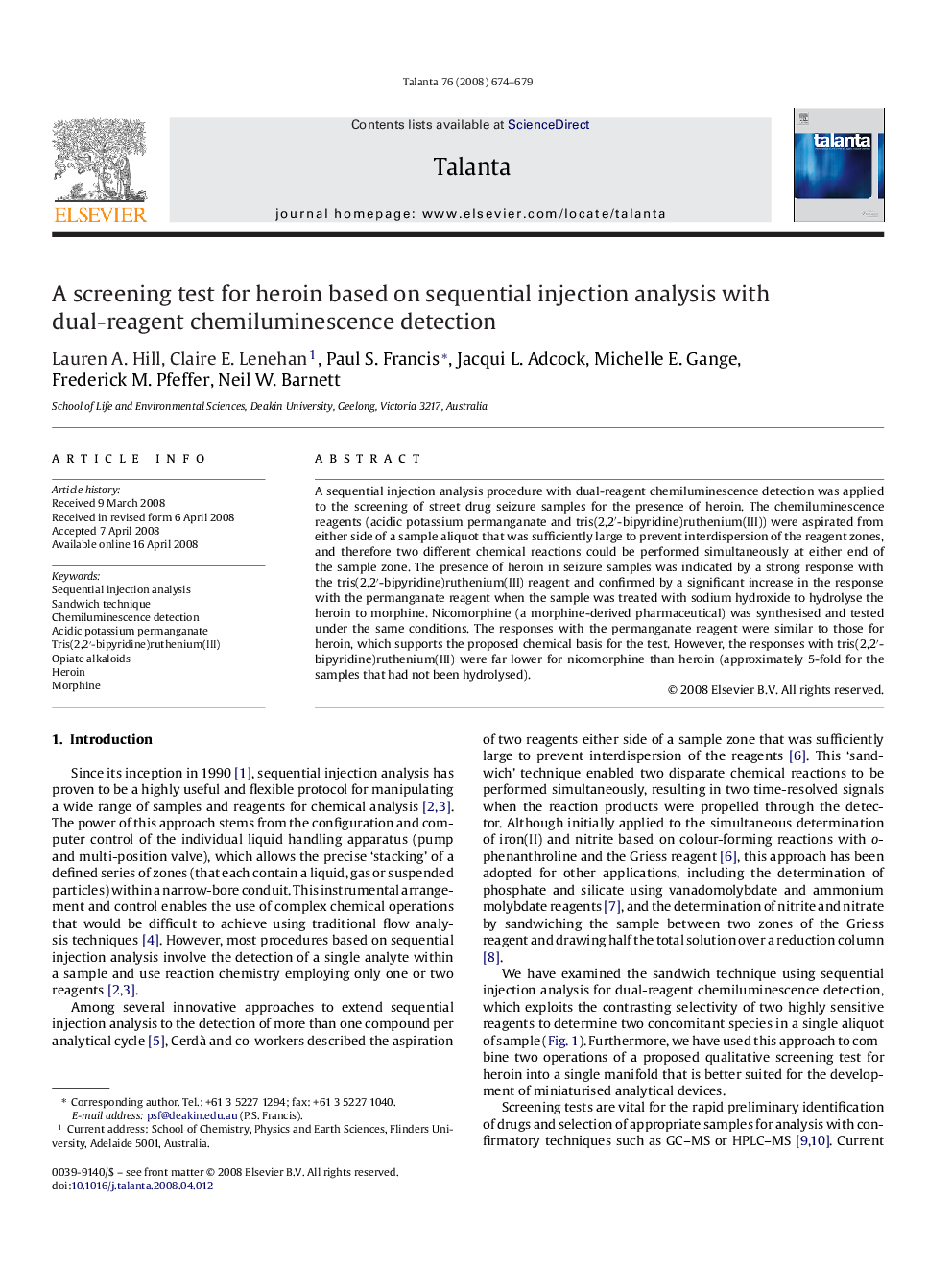| Article ID | Journal | Published Year | Pages | File Type |
|---|---|---|---|---|
| 1243541 | Talanta | 2008 | 6 Pages |
A sequential injection analysis procedure with dual-reagent chemiluminescence detection was applied to the screening of street drug seizure samples for the presence of heroin. The chemiluminescence reagents (acidic potassium permanganate and tris(2,2′-bipyridine)ruthenium(III)) were aspirated from either side of a sample aliquot that was sufficiently large to prevent interdispersion of the reagent zones, and therefore two different chemical reactions could be performed simultaneously at either end of the sample zone. The presence of heroin in seizure samples was indicated by a strong response with the tris(2,2′-bipyridine)ruthenium(III) reagent and confirmed by a significant increase in the response with the permanganate reagent when the sample was treated with sodium hydroxide to hydrolyse the heroin to morphine. Nicomorphine (a morphine-derived pharmaceutical) was synthesised and tested under the same conditions. The responses with the permanganate reagent were similar to those for heroin, which supports the proposed chemical basis for the test. However, the responses with tris(2,2′-bipyridine)ruthenium(III) were far lower for nicomorphine than heroin (approximately 5-fold for the samples that had not been hydrolysed).
